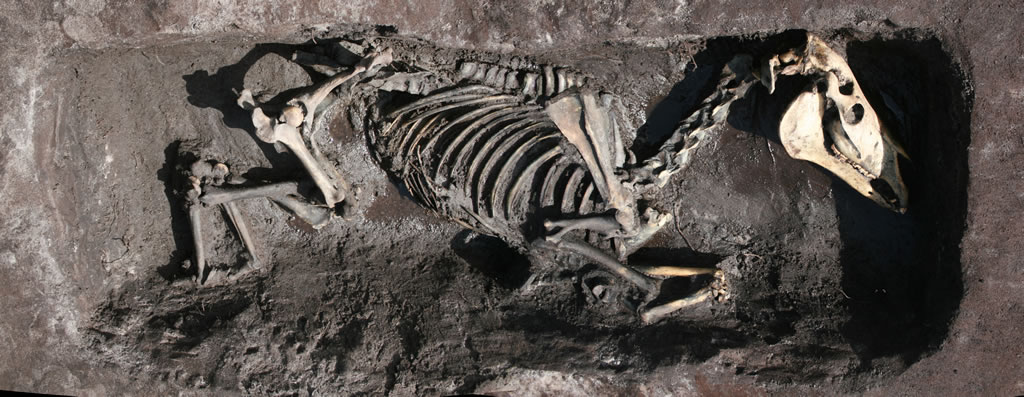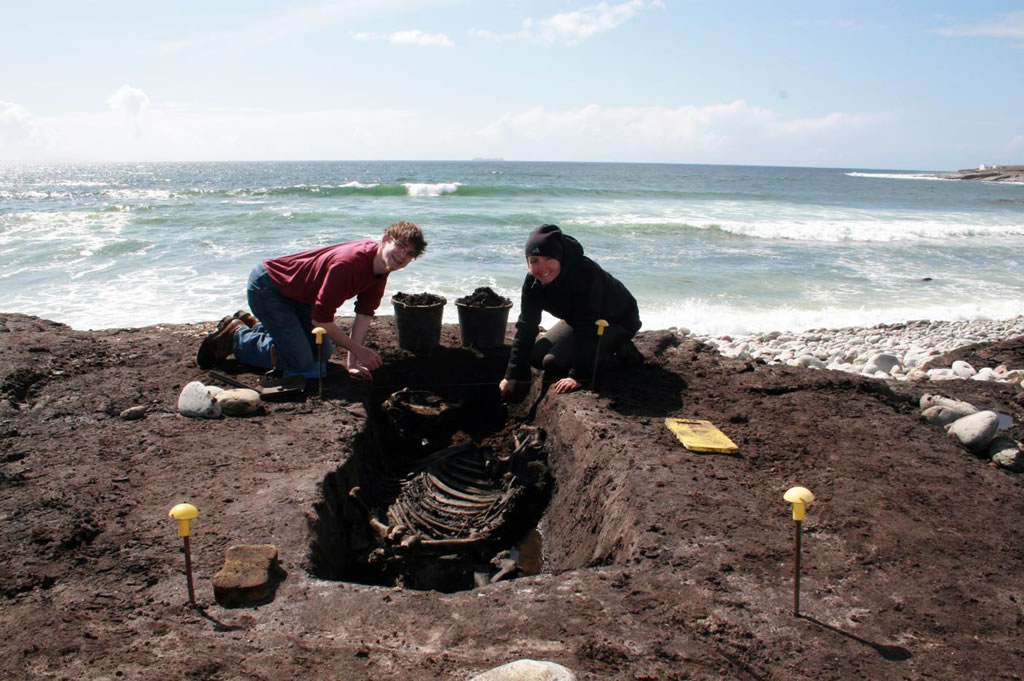
This article is © Copyright Achill Archaeological Field School
Heavy storms at the beginning of 2014 cleared away a deep shingle bank on Dooagh Beach, Achill Island, Co Mayo, exposing a large peat bed. Examination of this peat bed revealed that a large number of rectangular pits had been cut into its upper surface. In some instances it could be seen that some of the pits contained large mammal bones but it was not clear from surface examination if the pits contained complete animal burials or if they simply contains assortments or articulated or semi articulated animal bones in a manner consistent with waste disposal. The site was subject to a detailed GPS and Photographic survey which established that a total of 26 pits were visible in the area of freshly exposed peat, although it became clear that further pits were present to the immediate east of the site where the same peat formation was exposed in a vertical cliff face from which large animal bones could be seen protruding in at least 20 separate locations.

In May 2014 two of the most intact looking pits within the cluster were excavated by Achill Archaeological Field School. Pit 22 was found to measure 2.67m by 1.02m with a maximum depth of 0.49m. It contained an intact pony skeleton with its legs folded up underneath its body in a fashion thought to indicate the animal had been killed at the burial site. Pit 26 was found to measure 2.03m by 1.63m, with a maximum depth of 0.67m. It contained an intact pony skeleton with its fully extended out from the body, necessitating the excavation of a much larger pit. It is thought this indicates the animal had dies elsewhere and had been brought to the beach for burial after rigor mortis had set in. Examination of the two pony skeletons suggested both animals had a hard working life and had been fed a nutritionally poor diet. The horseshoes associated with the two excavated ponies indicated that the animals date from the middle of the 19th century or later. Local accounts indicate that animals were being buried in this location until the 1950’s. The site seems to have been used for the burial of large animal carcasses in a community that was too far removed from an abattoir to make removal of animals feasible.